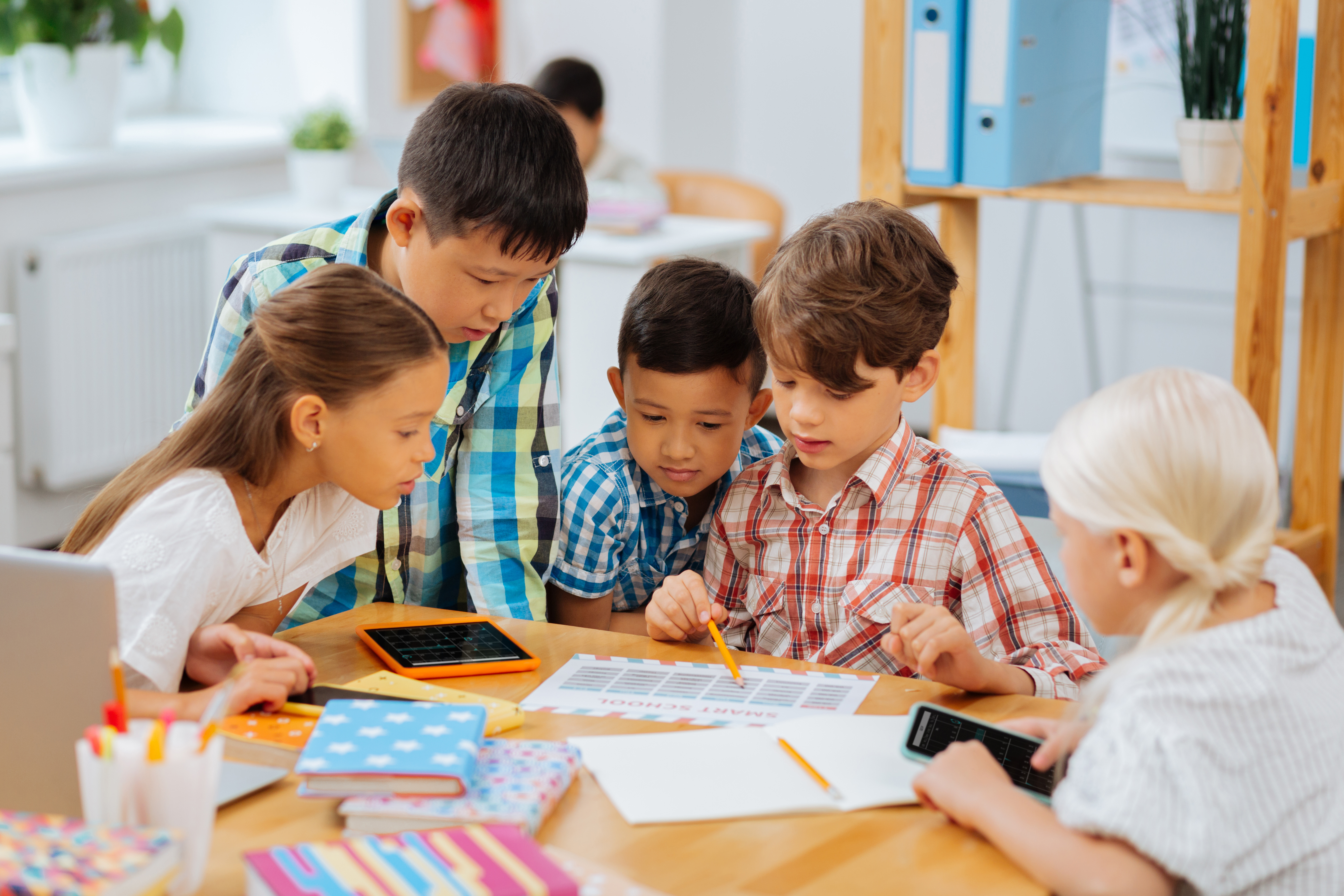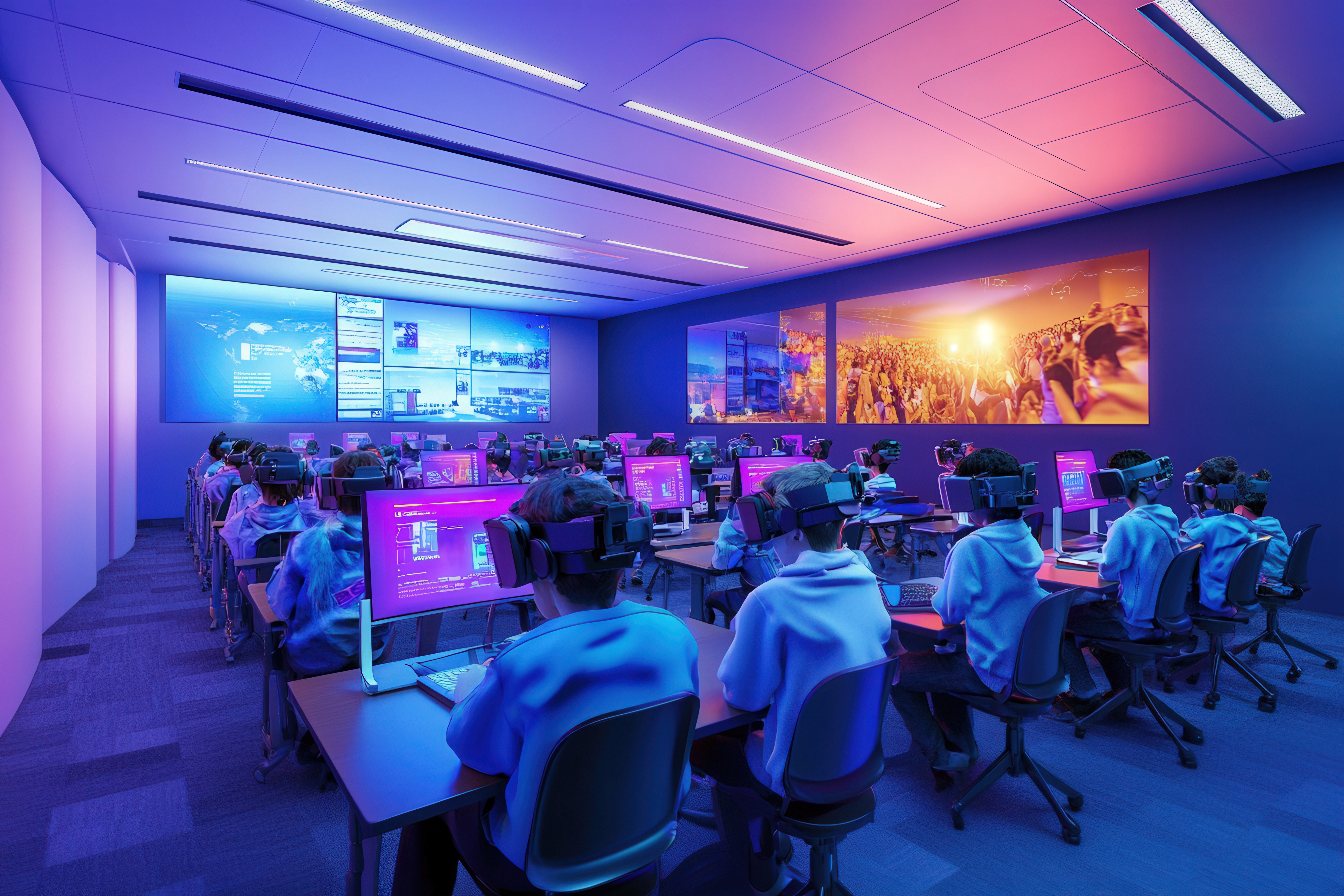Ed Tech Blog

A school’s culture is shaped not only by its policies and academic achievements but also by the everyday interactions among students, staff, families, and visitors. While large-scale initiatives are essential in shaping a positive environment, it is often the small, seemingly insignificant interactions that have the most profound and lasting effects. A simple greeting, a warm smile, an act of kindness—these subtle gestures build the foundation of a thriving and inclusive school culture. A positive school atmosphere encourages students to feel safe, teachers to feel valued, and parents to feel welcomed, ultimately fostering an environment where learning and personal growth can flourish.
Setting the Tone with Greetings and Acknowledgment
Every interaction within a school, no matter how minor, contributes to its overall climate. Something as simple as a friendly “Good morning!” from a teacher or a staff member greeting students by name as they enter the building can set the tone for the day. These small gestures make individuals feel seen and acknowledged, reinforcing their sense of belonging. When a student receives a warm smile from a teacher or a nod of encouragement from a classmate, it cultivates confidence and motivation. Similarly, when teachers feel appreciated through genuine expressions of gratitude, their morale and job satisfaction improve, leading to better engagement with students.
The Role of Active Listening
Active listening is another crucial aspect of positive interactions. When a student, parent, or colleague speaks, giving them undivided attention—making eye contact, nodding, and responding thoughtfully—demonstrates respect and care. It creates a sense of trust and mutual understanding, strengthening relationships within the school community. Encouraging words, whether from teachers to students, administrators to staff, or even between peers, play a significant role in reinforcing self-esteem and perseverance. A simple “You’re doing great!” or “Keep going, I believe in you!” can make a...
Read more: Cultivating a Thriving School Culture: The Profound Impact of Small Interactions

In classrooms worldwide, multilingual students face the unique challenge of acquiring academic content while simultaneously developing their English language skills. This dual learning process requires specialized instructional strategies that ensure students not only grasp essential subject matter but also build their language proficiency in meaningful and lasting ways. Effective approaches help bridge the language gap, making content accessible while fostering communication skills. Below, we explore various strategies that educators can implement to help multilingual students succeed in both areas.
Integrating Language and Content Learning
One of the most effective ways to support multilingual students is by integrating language instruction directly into academic content. Rather than teaching English in isolation, educators can incorporate it into subjects such as science, math, and social studies. This approach, known as content-based instruction (CBI), allows students to learn the language naturally as they engage with academic material. Teachers can make content comprehensible by providing context clues, such as visual aids, real-world examples, and hands-on activities. Additionally, simplifying language without oversimplifying the concepts ensures that students grasp both the content and the necessary vocabulary. For instance, a science lesson on ecosystems can include labeled diagrams, videos, and structured discussions that reinforce key terms and ideas while...
Read more: Empowering Multilingual Students: Strategies for Learning Content and English Together

In today’s digital landscape, education is undergoing a massive transformation. Online schools are no longer just an alternative to traditional brick-and-mortar institutions; they are becoming a primary choice for students worldwide. As demand increases, schools need scalable, secure, and efficient technological solutions to support growth and innovation. This is where cloud-based solutions, particularly those offered by Amazon Web Services (AWS), play a pivotal role.
The Power of Cloud-Based Learning Platforms
Online schools must manage vast amounts of student data, facilitate real-time collaboration, and ensure a seamless learning experience. Cloud-based solutions enable institutions to handle these challenges efficiently. Scalability is one of the biggest advantages, allowing schools to adjust their infrastructure based on enrollment numbers, ensuring smooth operation even during peak periods. As student numbers fluctuate, cloud-based solutions allow institutions to expand resources instantly without requiring additional hardware investments, making them highly adaptable to the growing demands of digital education.
Security is another crucial factor, as AWS provides robust measures such as data encryption and regular compliance checks, keeping student and faculty information safe. Cybersecurity threats have been a growing concern in online education, and AWS ensures that schools remain protected against data breaches and cyberattacks. The implementation of multi-factor authentication...
Read more: How AWS Cloud and AI Are Revolutionizing Online Education

The future of education is becoming increasingly intertwined with technology, and one of the most promising innovations in this space is augmented reality (AR) glasses. These smart lenses create digital layers over the physical world, allowing students to interact with information in ways never before possible. By bridging the gap between the digital and physical realms, AR glasses offer an immersive learning experience that can revolutionize education.
Enhancing Engagement and Comprehension
Traditional learning methods often rely on passive absorption of information through books, lectures, and videos. However, AR glasses transform learning into an interactive experience, keeping students engaged and improving comprehension. For example, instead of reading about the solar system, students wearing AR glasses can see and interact with 3D models of planets, moons, and stars as they orbit in real time.
By adding layers of information to the real world, AR technology helps students visualize complex subjects, making abstract concepts easier to grasp. This hands-on approach can be particularly useful for STEM (Science, Technology, Engineering, and Mathematics) education, where spatial reasoning and problem-solving skills are crucial. In addition to STEM fields, AR glasses can revolutionize subjects like literature and art. Imagine students analyzing Shakespearean plays with interactive scene reconstructions...
Read more: Augmented Reality Glasses: Revolutionizing Learning with Immersive Digital Experiences

Standardized testing season can be a stressful time for students, and as a parent, your support can make a significant difference. These tests measure academic progress and can influence school funding or grade promotions, so it's important to help your child feel prepared and confident. This guide offers practical tips for before, during, and after the test, ensuring you’re equipped to support your child effectively.
Standardized testing season is a critical period in the academic calendar, often bringing stress to students, parents, and educators. These tests, designed to measure student performance against state and national standards, can have significant implications, such as influencing school funding, class placements, or grade promotions. Given their high stakes, parental involvement is crucial to help students navigate this period successfully. This comprehensive guide, informed by educational resources and expert advice, outlines behaviors parents can encourage to boost student success on standardized tests, focusing on actions before, during, and after the test, as well as daily habits that support long-term readiness.
Understanding the Testing Season
Standardized tests, typically administered by commercial test publishers, provide a common measure of student performance across large populations. They fall into categories like achievement tests, which assess subject-specific knowledge, and aptitude...
Read more: Comprehensive Guide for Parental Support During Testing Season

Flexibility in learning means adapting teaching methods, curriculum, and assessments to fit individual student needs, while choice allows students to decide how, what, and when they learn. These approaches are gaining traction in K–12 education as ways to create more engaging and effective learning environments. By giving students more control and tailoring education to their unique styles, schools can help them thrive academically and personally.
Benefits for K–12 Students
Studies indicate that flexibility and choice lead to better learners by boosting motivation and engagement. When students can learn at their own pace or choose projects that interest them, they often perform better academically. This is especially true for diverse learners, as flexible methods can address different abilities and backgrounds, making education more inclusive. Additionally, these approaches prepare students for future challenges by developing skills like self-direction and adaptability, which are crucial in today’s world.
This blog provides a comprehensive exploration of how flexibility and choice in learning can lead to better learners in K–12 schools, expanding on the direct answer with detailed insights, research findings, and practical applications. It aims to mimic a professional article, offering a strict superset of the content above, including all relevant details from the analysis...
- Transforming School Libraries into Makerspaces for Community and Student Well-Being
- Unlocking Student Potential: The Power of Tiered Assessments
- Digital Citizenship in 2025: How Schools Are Shaping Responsible Online Users
- Holistic Security in Schools: Integrating Physical and Cyber Measures for Ultimate Safety
